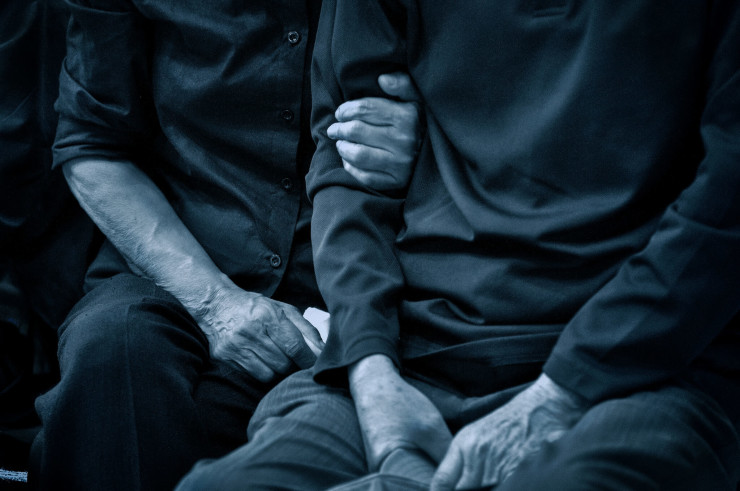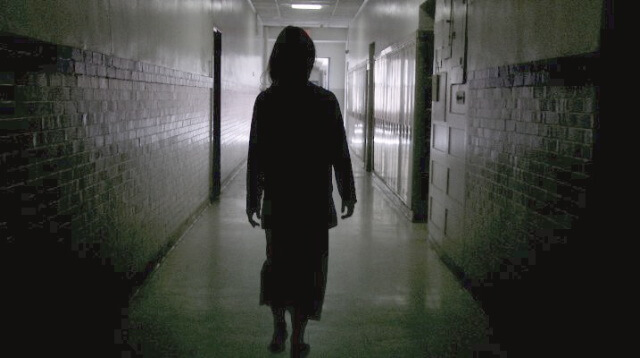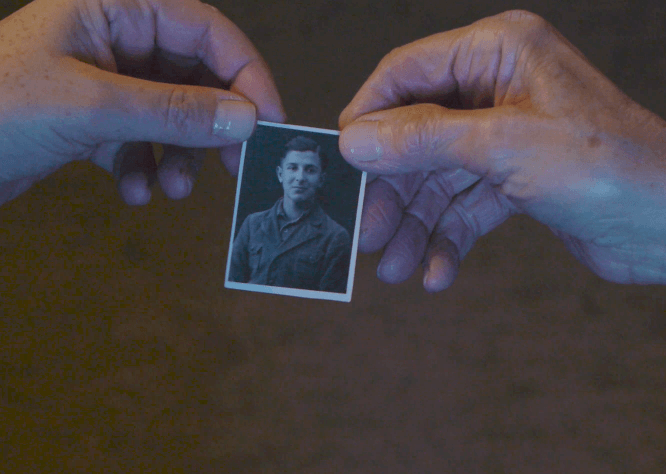In Part 2 of my interview with Janet R. Kirchheimer, I speak with the poet and filmmaker about her recent collaboration with photographer Aliza Augustine on a multimedia exhibition, “How to Spot One of Us, ” on view through May 18 at Kean University’s Human Rights Institute Gallery in New Jersey.
Exhibition of Family Photos Preserve Memory of Holocaust
How did you come to conceive of and collaborate with photographer Aliza Augustine on your multimedia exhibition “How to Spot One of Us”?
Aliza and I met at a Children of Holocaust Survivors event and we talked about Holocaust remembrance and what we were doing to accomplish that. She was working on series of photographs of children of survivors and I was working on BE•HOLD and my poetry. We decided to produce together an exhibition of our respective work and [to] integrate some of my poems with some of her photographs taken in Europe at Holocaust-related sites.
The title of this exhibition—also the title of your 2007 poetry collection—is provocative, stresses, I think, a singling out, some unmistakable characteristics or features that indelibly mark Holocaust survivors and their children. Do you agree?
Yes, I agree. In my book, I use the title “How to Spot One of Us” in more than one way. The title refers to the survivors, their children, and their grandchildren, and it is also a play on the anti-Semitic phrase, “You can spot a Jew.”
For the exhibit, the title feels more specific to me, since it is by and about children of survivors. In the portrait series, each child holds a family photo. Also showing in the exhibit is a portion of BE•HOLD—a film of my poem “How I Knew and When.” The film details some of the ways I came to know about the Holocaust at various ages and through snippets of stories.
How to Spot One of Us
We’re the ones who didn’t know our relatives
spoke with accents, the ones whose parents
got nervous if we didn’t come home
on time, were afraid to let us go
places by ourselves, who
told the neighborhood kids the numbers
on their forearms were their phone numbers,
who won’t visit Germany, who wake up
night after night from dreams, who never talk
about the past, or never stop
talking about the past, and we’re the ones
who dream about big families, who
wish words could just be words, wish “camp”
or “selection” didn’t make us flinch,
and sometimes we’re the ones
who do everything we can
so you don’t know who we are.
—Janet R. Kirchheimer
What have been visitors’ reactions to the exhibit, and are those reactions the takeaways you wished for?
We’ve received many positive comments about the exhibit, which presents film, poetry, and photography. People relate to the artistic nature of the exhibit and how it presents memory in an innovative way.
[Aliza Augustine and I] believe that it is important to use the arts to remember the Holocaust. A teacher who brought her students to view the exhibit told me they were excited by the contemporary way the Holocaust was presented, and they want to learn more.
These are the takeaways I wished for. It means a tremendous amount to me that people relate to and are moved by our work.
Featured image by 白士 李, Creative Commons license via Flickr. Post photos and poem by Janet R. Kirchheimer. Interview by Maureen E. Doallas, author of Neruda’s Memoirs: Poems.

For further reference:
Part 1 of Janet R. Kirchheimer Interview
Janet R. Kirchheimer on Facebook and Twitter
BE•HOLD on Facebook
Jewish Writing Project
________________________
Writing Workshop: Becoming Mindful in Place

- Persecuted Poets: Hearing the Voices Beyond Our Borders - November 30, 2016
- Writing with Matisse in Mind - October 26, 2016
- Healing with Poetry: Interview with Fred Foote (Part 3) - September 10, 2015



Bethany R. says
That poem hit me in gut.
“who
wish words could just be words, wish ‘camp’
or ‘selection’ didn’t make us flinch,”
The bottom picture of the held photograph touched me. The longer I look at that man’s face, at his sort of held-back smile, I wonder what he was thinking in that moment. What are his eyes fixed on? His expression is intriguing. Is he feeling pleased? Shy? Sombre? I can’t tell. But to someone close to him, like his mother perhaps, it would probably be clear what this face means.
Then to see the aged hands and trimmed nails (did the man have similar hands?) of someone in his family holding him on paper, is like being invited into someone’s jewelry box. Such a generous, intimate moment.
Thank you for sharing this.
Bethany R. says
Maureen,
It is perfect.
What an honor to get to speak with her. I’m grateful to you and TSP for this important post.
Richard Maxson says
Maureen, this segment of your interviews was both moving and enlightening. The effects of the Holocaust reverberate through history in the children and childrens’ children of both victims and survivors. “How To Spot One of Us” is poignant in presenting the everyday reminders for children of the Holocaust.
Thank you for once again, through these interviews, reminding us not to forget .
Maureen Doallas says
Richard, thank you so much for reading and commenting.
Do visit Aliza’s Website. Her photography and Janet’s poetry strike a deep chord.
Maureen Doallas says
Bethany,
Thank you so much for reading and commenting. I feel privileged to have had the chance to talk with Janet. I believe deeply in her project with Aliza and the film project that will be the subject of Part 3.
Janet’s collection of poems is still available through Amazon and other booksellers. She was so generous to share some selections with us.
You selected the header photograph. It’s perfect.